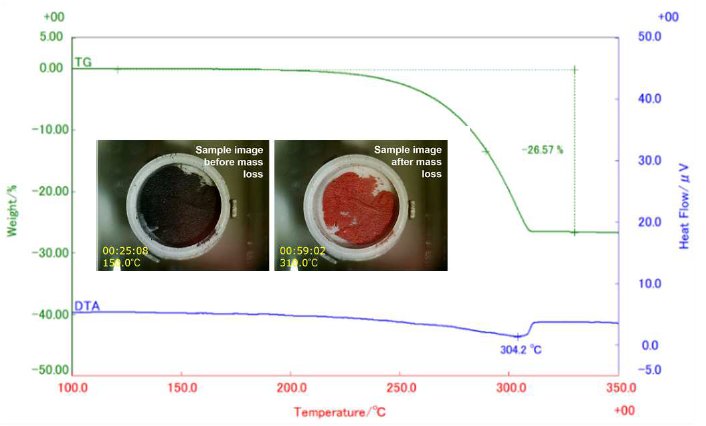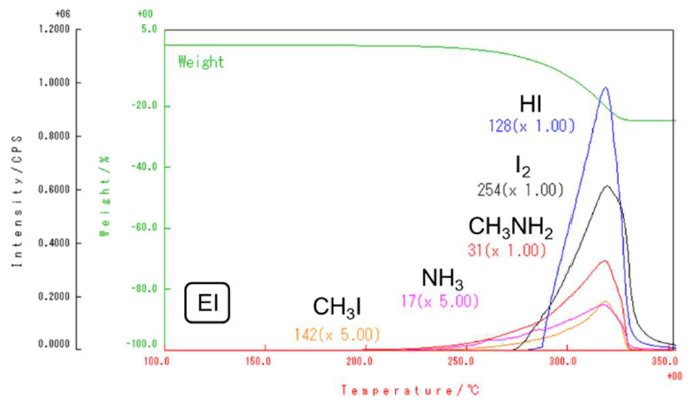Evaluation of Perovskite Solar Cell Material by Sample observation TG-MS
Introduction
The high power generation efficiency and the potential for low-cost processes of Perovskite solar cells have been actively researched and developed in recent years. In this application, the thermal behavior of lead methylammonium iodide (MAPbI₃, (CH₃NH₃)PbI₃), a representative perovskite crystal intensifying agent, was investigated by sample observation TG-MS.
Measurement and results
MAPbI₃ powder was heated to 10°C/min at room temperature to 350°C in He atmosphere. Electron ionization (EI) was used in MS ionization mode. The TG-DTA curve and observation images before and after the mass loss are shown in Figure 1. Initially, the sample color was black. Then, a mass loss with endothermic reaction is observed from 200°C where the sample color changed to red after the mass loss. The temperature profile of the MS signal is shown in Figure 2 to confirm that the gas evolved during mass loss in which Methylamine, hydrogen iodide, and iodine are mainly detected during weight loss. Other gases that were detected are ammonia or methyl iodide. It could be that MAPbI₃ has disassembled and produced a variety of gases, and PbI₂ (red) is produced as a residue.

Figure 1: TG-DTA curve and sample observation image during MAPbI₃ heating

Figure 2: MS ion thermograms of MAPbI₃ during heating (magnification factor in parentheses)
(Samples were kindly provided from laboratory of Prof. Yukio Furukawa, School of Advanced Science and Engineering, Waseda University)

Contact Us
Whether you're interested in getting a quote, want a demo, need technical support, or simply have a question, we're here to help.
